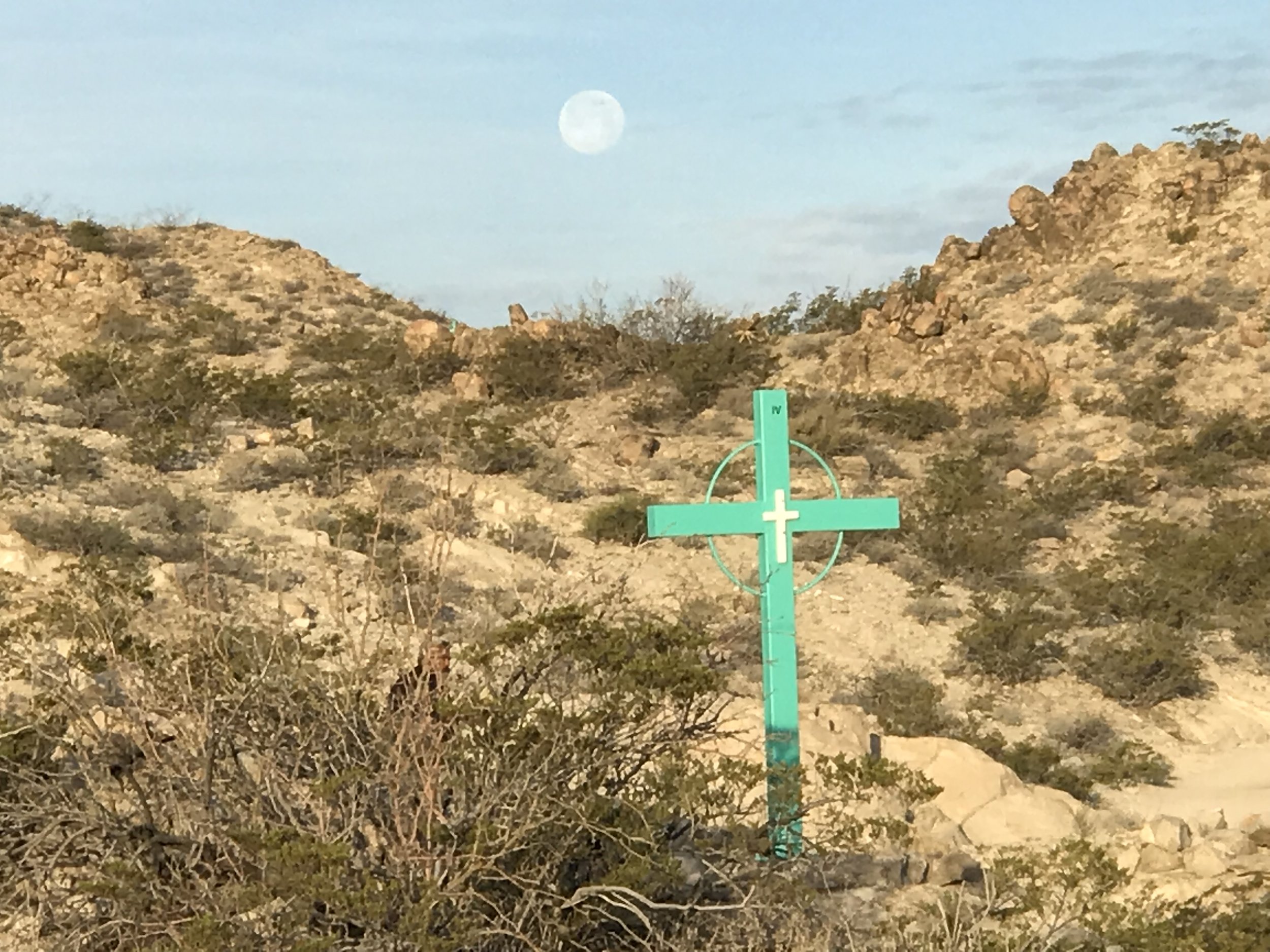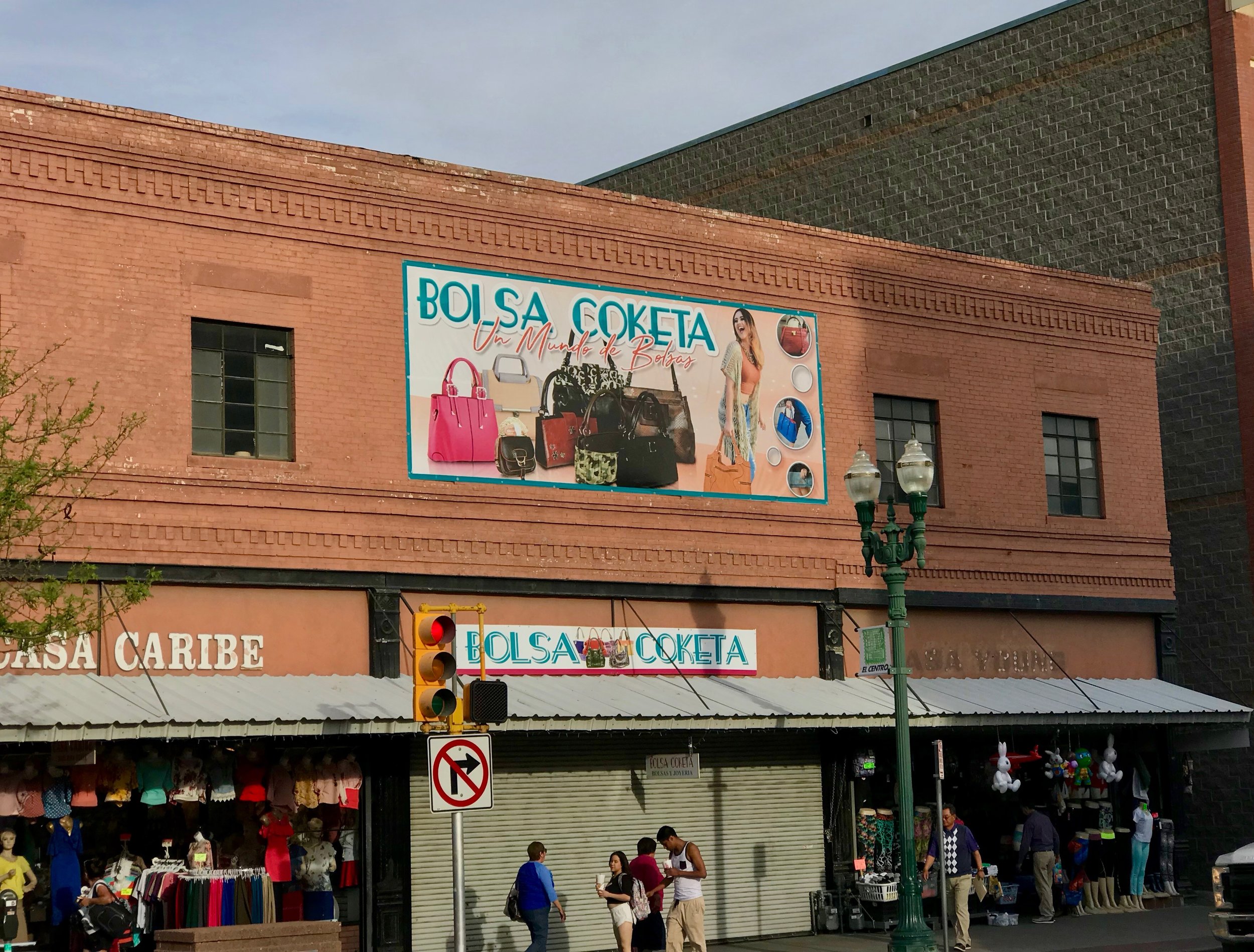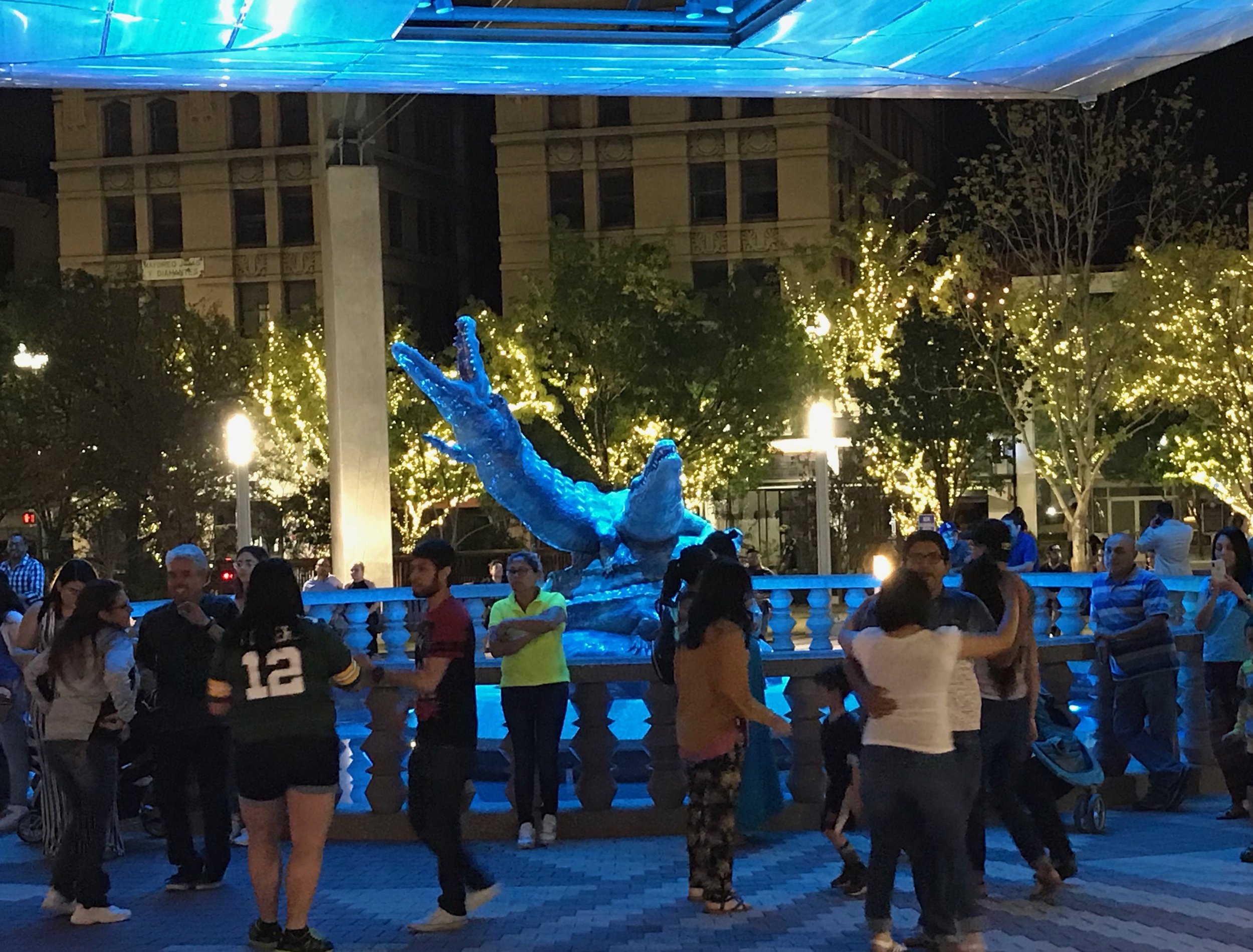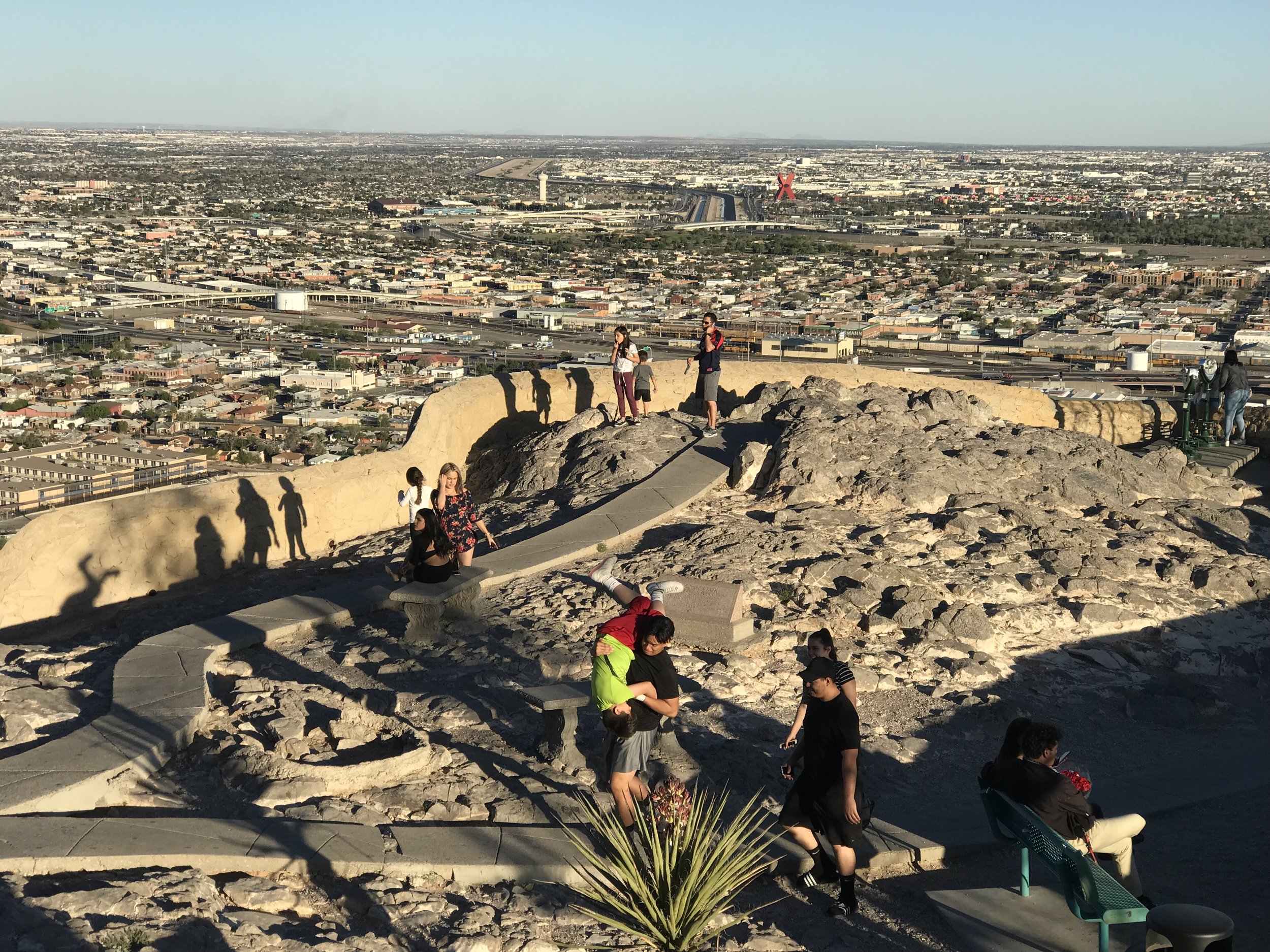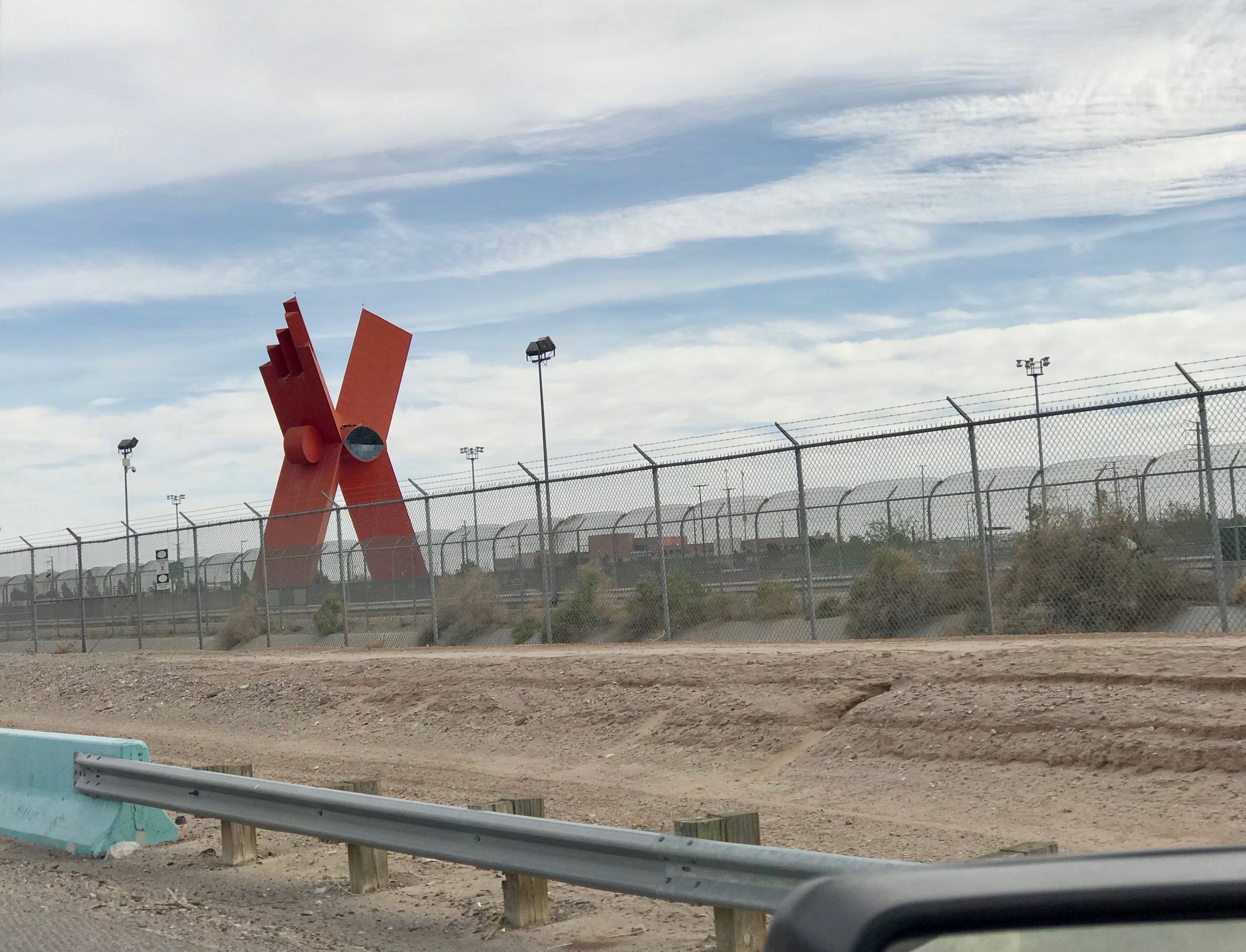Joined by a border
By Rick Holmes
Feb. 22, 2019
On one side of El Paso, a huge electric star shines on a mountainside. On the other, a giant red X rises from the valley floor. In between is the Rio Grande River, and a floodlit no man’s land of fence barriers.
You can get from El Paso’s signature landmark to that of its Mexican sister, Ciudad Juarez, but it’s a lot harder than it used to be 10 years ago, when 42 miles of fencing were added to fortify the border.
El Paso and Juarez comprise a binational metropolitan area, one of the largest in the Western Hemisphere: 2.7 million people straddling the Rio Grande. Every day, 70,000 people cross the border legally to work, attend school and shop. El Paso and Juarez are woven together by history, commerce and family ties.
The border culture permeates El Paso. I walked South El Paso Street, the historic path to the border crossing, humming an old Marty Robbins song about a gunfight at Rosa’s Cantina. It felt more like a Mexican Main Street than an American one. I spent Saturday night in San Jacinto Park, where a Latin band made it a fiesta. On Easter morning, I joined the faithful from two countries for a sunrise hike up Mt. Christo Rey, where a huge statue of Christ blesses both sides of the Rio Grande.
In El Paso, you’re as likely to hear Spanish as English. Most people speak at least some of both languages. In some inland parts of the U.S., people see this as a problem. On the border – and in most parts of the world, for that matter – speaking more than one language is considered a good thing.
Run International, a 10K road race, celebrates the kinship of El Paso and Ciudad Juarez. Runners start in downtown El Paso, snaking by parks, stores and government buildings. They cross the river into Juarez and run past the city hall and the historic bull ring on the Plaza De Toros. The race ends in the center of the Paso del Norte Bridge linking the cities. From there you can see workers today adding yet more fortifications to the barriers on the U.S. side.
Last November the race was canceled at the request of U.S. Customs and Border Protection officials, who said resources required by the event had to be diverted to respond to the threat of migrant caravans headed north from Central America. These are not happy times on the U.S.-Mexican border.
Two rallies squared off this month across the street from each other just north of the border. On one side President Donald Trump again pleaded for his wall. He declared again, as he had in his State of the Union speech, that the border fence had transformed El Paso from one of the most dangerous cities in the U.S. to one of the safest.
This, as Trump and anyone who followed the fact checks on the State of the Union knows, is simply false. According to FBI crime statistics, El Paso was never one of the most dangerous cities in the U.S. Its rate of violent crime has been below the national average for decades. That rate has declined steadily since the early 1990s, leveled off before the new walls were completed in 2009 and El Paso remains one of the safest cities its size.
The mayor of El Paso, a Republican, was quick to respond that Trump didn’t know what he was talking about in the State of the Union. At his rally in El Paso, Trump said the mayor was “full of crap” and repeated the lie.
The rally across the street was led by Beto O’Rourke, who came close last year to being the first Texas Democrat in a generation elected to the Senate. O’Rourke was born in El Paso, served on the El Paso City Council and represented El Paso in Congress. He watched bullfights in Juarez as a child and ran the Run International 10K as an adult.
Trump declared there were 35,000 people at his rally and 200 or 300 people at O’Rourke’s, but the pesky fact-checkers at the El Paso Fire Department begged to differ. They counted 6,500 at Trump’s rally, and guessed at another 2,000 outside. Official estimates of O’Rourke’s counter-rally ranged from 7,000 to 15,000.
O’Rourke offered a lesson in the math of the borderlands that inlanders like Trump don’t understand. “Here,” he told the crowd, “two and a half-million people from two countries, speaking two languages, bridging two histories and two cultures, are joined – not separated – by the Rio Grande River, forming something far greater, and more powerful, than the sum of our parts.”
Opposition to Trump’s wall runs strong on both sides of the Rio Grande, where people understand that it’s bridges, not barriers, that make a border strong. Come to El Paso and see.
Rick Holmes can be reached at rick@rickholmes.net. You can follow his journey at www.rickholmes.net. Like him on Facebook at Holmes & Co, and follow him on Twitter @HolmesAndCo.
